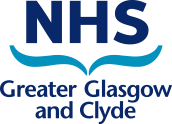Formulary Search Results for: SITAGLIPTIN
6.1.2.6 Dipeptidylpeptidase-4 Inhibitors - View Category

Restrictions:
Formulary indications are summarised in the Prescribing notes below:
Prescribing Notes:
Indications and restrictions for use in type 2 diabetes mellitus:
- Sitagliptin is the preferred DPP4-inhibitor in NHSGGC.
- Monotherapy is restricted to patients for whom both metformin and sulfonylureas are inappropriate due to contraindications or intolerance.
- Combination with a sulfonylurea is restricted to patients in whom metformin is contraindicated or not tolerated.
- Combination with both metformin and a sulfonylurea (i.e. triple therapy) is restricted to patients who are inadequately controlled on their respective maximal tolerated doses of metformin and sulfonylurea.
- Add-on treatment to insulin (with or without metformin).
This class of medicines is not considered the most cost-effective choice when used as first-line therapy, and even when used as 2nd or 3rd line, they may only result in a modest reduction of HbA1c. In some situations, alternative therapy, such as insulin or GLP-1 analogue may be more appropriate
Patients initiated on gliptin therapy should be reviewed at 6 months and treatment should stop medication if individualised target not achieved AND HbA1c falls less than 0.5% (5.5mmol/mol). Please see the NHSGGC Diabetes Guidelines for further information (link here).
6.1.2.6 Dipeptidylpeptidase-4 Inhibitors - View Category
Restrictions:
Restricted to use in patients for whom a combination of Sitagliptin and metformin is an appropriate choice of therapy and only when the addition of a sulfonylurea to metformin monotherapy is not appropriate. Combination preparations are further restricted to use only in those patients who have demonstrable compliance issues with the separate constituents.
Prescribing Notes:
This class of medicines is not considered the most cost-effective choice when used as first-line therapy, and even when used as 2nd or 3rd line, they may only result in a modest reduction of HbA1c. In some situations, alternative therapy, such as insulin or GLP-1 analogue may be more appropriate
Patients initiated on gliptin therapy should be reviewed at 6 months and treatment should stop medication if individualised target not achieved AND HbA1c falls less than 0.5% (5.5mmol/mol). Please see the NHSGGC Diabetes Guidelines for further information (link here).
